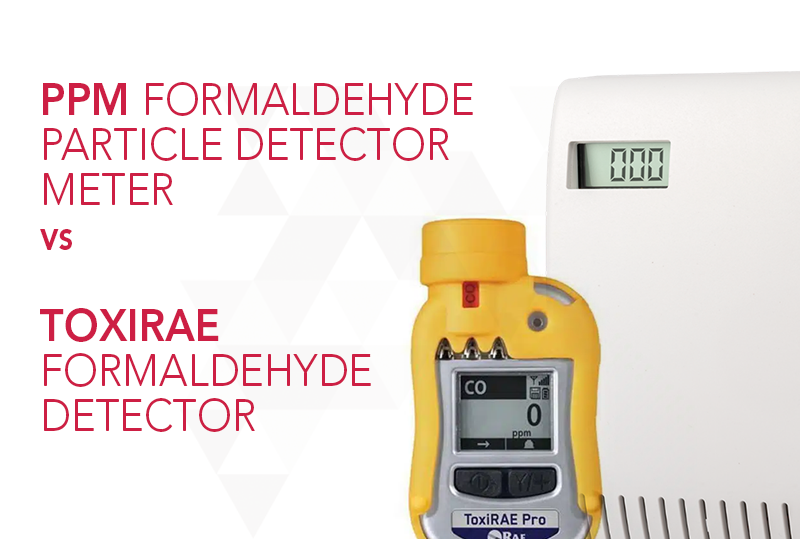Formaldehyde is a highly toxic substance for people in proximity to it, in addition, it can cause serious harm to the environment. Formaldehyde fumes can cause temporary and long-term pain or illness that can have serious effects on personnel’s health including increased risk of certain cancers, including nasopharyngeal cancer and leukaemia from prolonged exposure.
Therefore, it is important to employ a detector meter in your laboratory or workplace that detects and alerts exposure levels to Formaldehyde, such as the PPM Formaldehyde Particle Detector Meter and the ToxiRAE Formaldehyde Detector. But what is the difference?
ToxiRAE Formaldehyde Detector
The ToxiRAE Formaldehyde Detector is a portable, handheld device used to detect and measure formaldehyde gas in the environment as well as other gas analysis. Using a sensor technology, the detector uses an electrochemical sensor to detect formaldehyde. This sensor contains an electrolyte and electrodes. When formaldehyde gas comes into contact with the sensor, a chemical reaction occurs at the surface of the electrodes.
Calibration
Regular calibration is essential for accuracy. This involves exposing the sensor to known concentrations of formaldehyde and adjusting the device to ensure accurate readings. The ToxiRAE Formaldehyde Detector offers indirect calibrations which involves taking a bottle of CO that can cause an interference in the formaldehyde sensor. A relationship is established between the interference caused by the CO and the concentration of formaldehyde. However, This indirect method is deemed to be a less accurate calibration than a direct calibration with formaldehyde.
PPM Formaldehyde Particle Detector Meter
A PPM (Parts Per Million) formaldehyde particle detector has similarities to the ToxiRae Formaldehyde Detector and differences in the way that they are designed to measure the concentration of formaldehyde gas in the air.
Similar to the ToxiRAE detector, a PPM formaldehyde detector often uses an electrochemical sensor. All electrochemical sensors have interferences. In the case of formaldehyde sensors, the main interference is alcohol, which can cause significant positive interferences. However, PPM has successfully developed anti-phenol filters, which attenuate these interferences.
Data
The digital signal the PPM Formaldehyde Particle Detector Meter offers is processed by a microprocessor, which calculates the formaldehyde concentration based on pre-calibrated data. This calibration data correlates the sensor output with known formaldehyde concentrations. PPM Formaldehyde Particle Detector Meter can log data over time, which can prove useful for monitoring exposure levels, identifying trends and patterns in different environments and implementing safety measures.
Calibration
There are currently no standard bottles of formaldehyde gas that can be used for calibration, however, PPM has developed a method based on 2-4 Dinitrophenylhydrazine (DNPH). DNPH reacts with formaldehyde to give a stable compound, measurable by HPLC, and is an accepted method for measuring formaldehyde by NIOSH, OSHA and all European legislations.
The method consists of testing formaldehyde with DNPH, revealing different measurements dependent on the temperature. The test tube used for testing is then valid for and expires after 8 months. The use of Formaldehyde successfully ensures very accurate field calibrations are achieved with PPM Detectors.
For more information, speak to a member of our team about our range of formaldehyde detectors and other products that will help you and your team safe including our Vaportest Air Monitoring Badges including our Vaportest badge specific for the analysis of Formaldehyde exposure.
T: +44 (0) 844 8080 900
E: labsupplies@solmedialtd.com

